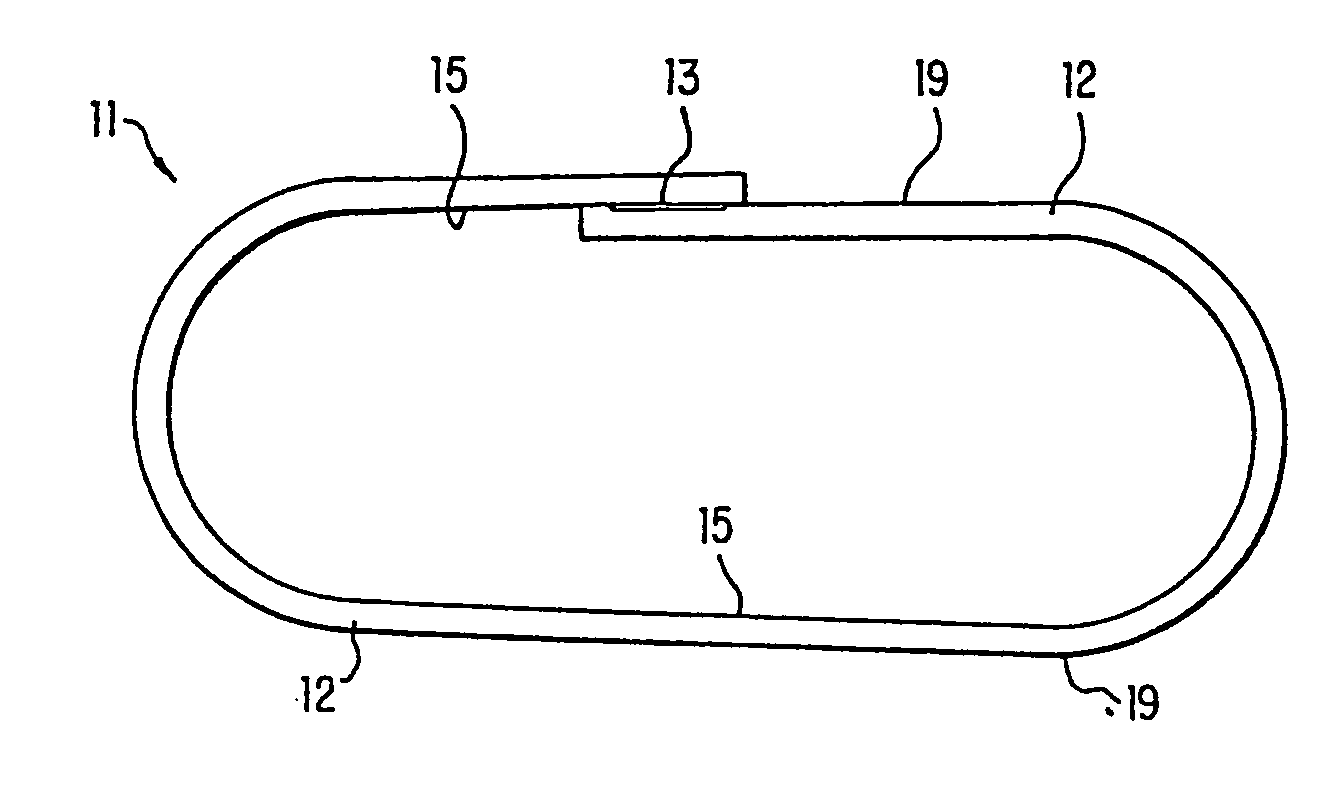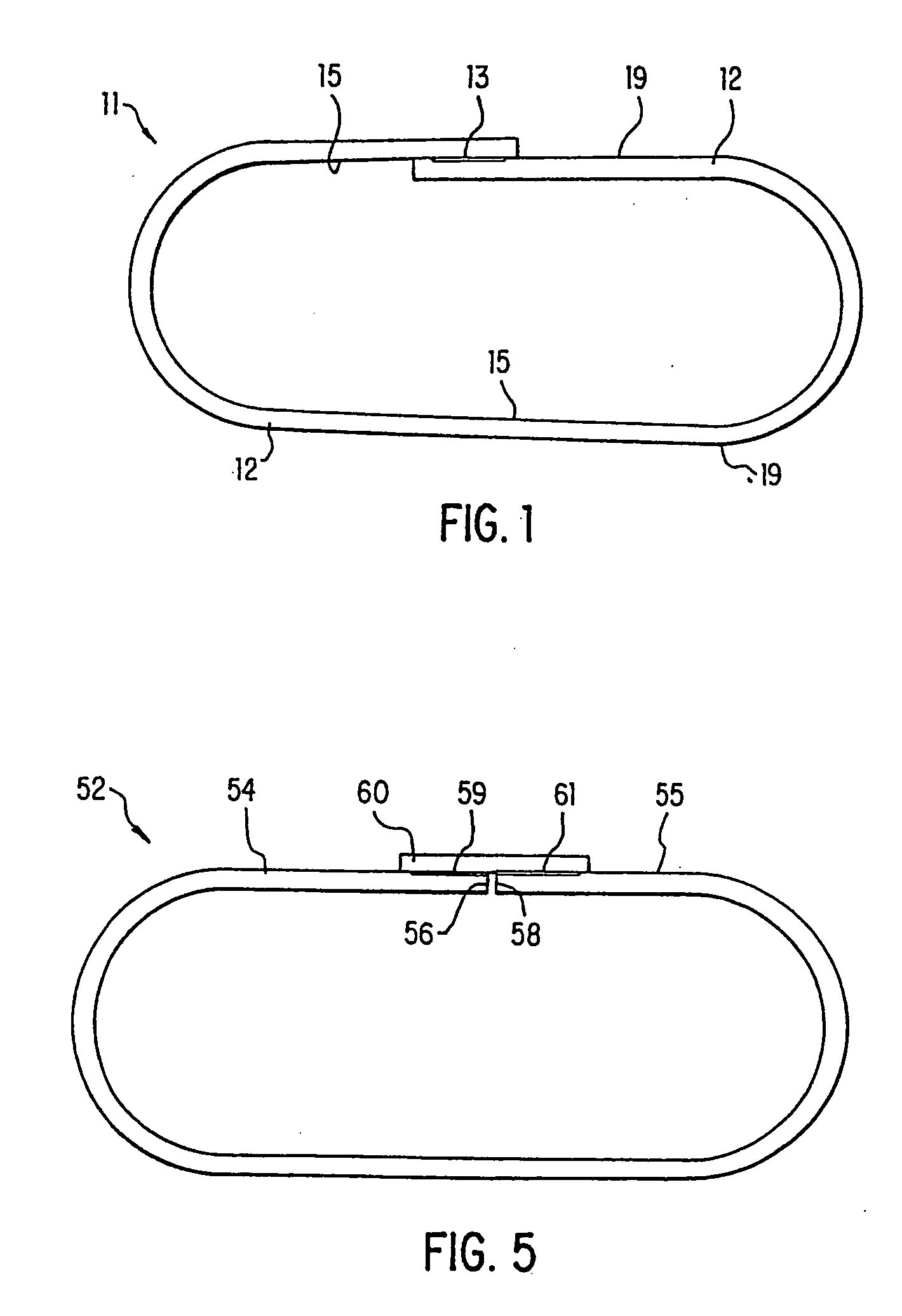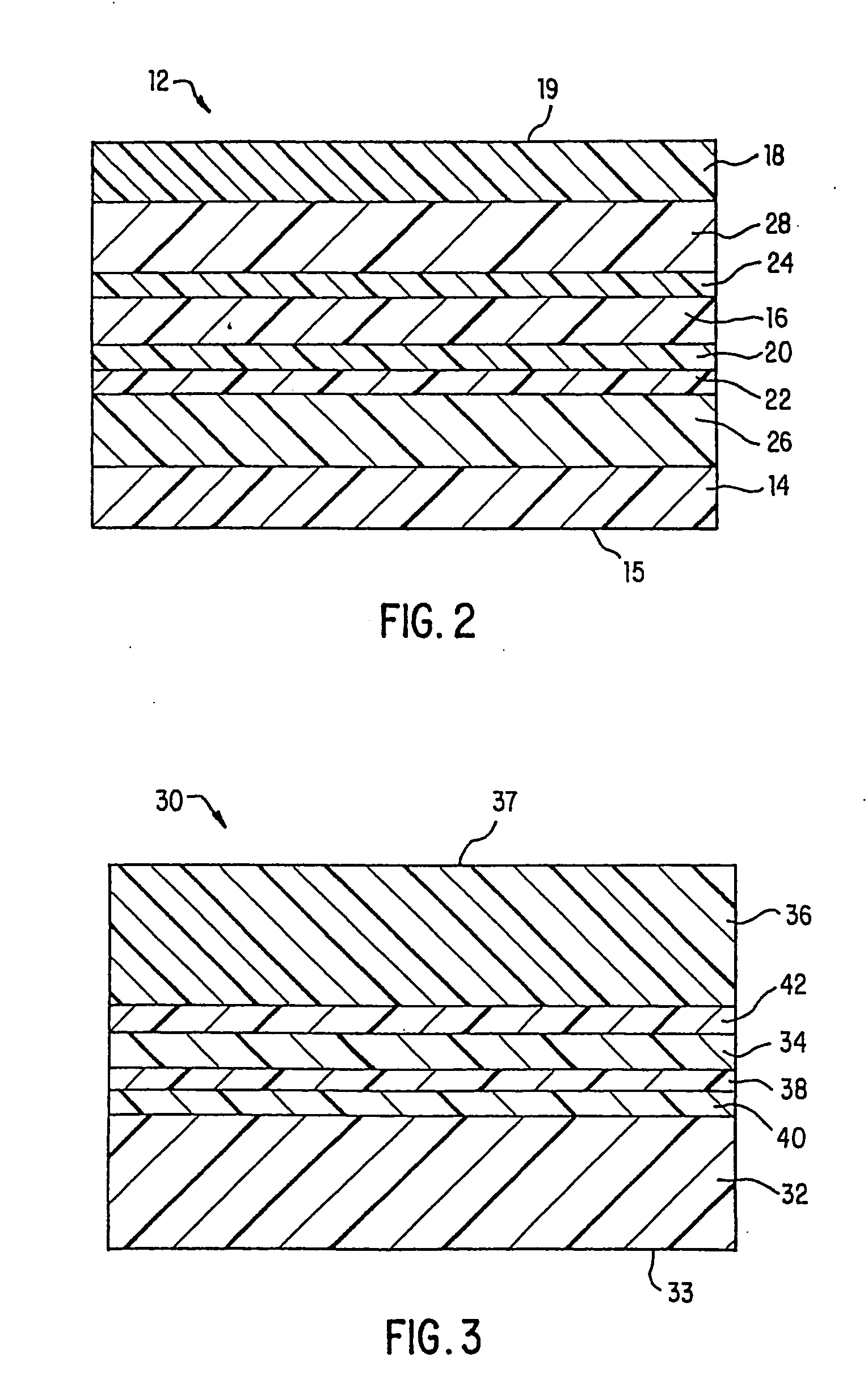Backseamed casing and packaged product incorporating same
a backseamed and packaging technology, applied in the field of multi-layer films, can solve the problems of reducing yield, and destroying the desired smooth surface, so as to prevent purging, reduce or destroy the corona treatment, and prevent the effect of purging
- Summary
- Abstract
- Description
- Claims
- Application Information
AI Technical Summary
Benefits of technology
Problems solved by technology
Method used
Image
Examples
example 1
[0186] A 3¾ inch wide (lay flat dimension) tube, called a “tape”, was produced by the coextrusion process described above and illustrated in FIG. 8, wherein the tape cross-section (from inside of tube to outside of tube) was as follows:
[0187] 3.0 mils of LLDPE# 1 (80%) and Ionomer # 1 (20%) /
[0188] 3.2 mils of a blend of EVA# 1 (80%) and LMDPE# 1 (20%) /
[0189] 1.8 mil of anhydride grafted LLDPE#2 /
[0190] 1.6 mils of a blend of Nylon#1 (50%) and Nylon# 2 (50%) /
[0191] 0.8 mil of EVOH /
[0192] 0.8 mils of anhydride grafted LLDPE#2 /
[0193] 2.7 mils of a blend of EVA#1 (80%) and LMDPE#1 (20%) /
[0194] 3.5 mils of LLDPE #3.;
[0195] wherein:
[0196] LLDPE# 1 was DOWLEX® 2045.03 linear low density polyethylene, obtained from Dow Plastics, of Freeport, Tex.;
[0197] Ionomer#1 was SURLYN® 1650 zinc-based ionomer of ethylene / methacrylic acid copolymer, obtained from E.I. DuPont de Nemours, of Wilmington, Del.;
[0198] LLDPE#2 was TYMOR® 1203 linear low density polyethylene having an anhydride fun...
example 2
[0209] A 3¾ inch wide (lay flat dimension) tape is produced by the coextrusion process described above in FIG. 8, wherein the tape cross-section (from inside to outside) is as follows:
[0210] 6.0 mils of LLDPE#3 (80%) and ION# 1 (20%) /
[0211] 1.1 mil of anhydride grafted LLDPE#2 /
[0212] 2.0 mils of a blend of Nylon#1 (50%) and Nylon#2 (50%) /
[0213] 1.1 mil of EVOH /
[0214] 1.1 mils of anhydride grafted LLDPE#2 /
[0215] 6.0 mils of LLDPE #3,
[0216] wherein all the resins are as identified in Example 1 above. All the resins are extruded at a temperature of from about 380° F. to 500° F., and the die is at approximately 420° F. The extruded tape is cooled with water and flattened, the flattened width being 3¾ inches wide, in a lay-flat configuration. The tape is then passed through a scanned beam of an electronic cross-linking unit, where it receives a total dosage of 64 kilo Grays (kGy), which is the equivalent of 4.5 mega Rads (MR). After irradiation, the flattened tape is passed throug...
example 3
[0220] A 3¾ inch wide (lay flat dimension) tubular tape is produced according to Example 1. The tape cross-section (from inside of tube to outside of tube) is as follows:
[0221] 6.0 mils of Terpolyolefin# 1 /
[0222] 1.1 mil of anhydride grafted LLDPE#2 /
[0223] 2.0 mils of a blend of Nylon#1 (50%) and Nylon#2 (50%) /
[0224] 1.1 mils of EVOH /
[0225] 1.1 mils of anhydride grafted LLDPE#2 /
[0226] 6.0 mils of LLDPE #3,
wherein:
[0227] Terpolyolefin#1 is LOTADER®3210 ethylene / butyl acrylate / maleic anhydride terpolymer, comprising about 3% anhydride functionality, obtained from Elf Atochem North America, Inc., of Philadelphia, Pa., and all the other resins are as identified in Example 1 above.
[0228] All the resins are extruded between 380° F. and 500° F., and the die is at approximately 420° F. The extruded tape is cooled with water and flattened, the flattened width being 3¾ inches wide, in a lay-flat configuration. The tape is then passed through a scanned beam of an electronic cross-lin...
PUM
| Property | Measurement | Unit |
|---|---|---|
| Temperature | aaaaa | aaaaa |
| Fraction | aaaaa | aaaaa |
| Fraction | aaaaa | aaaaa |
Abstract
Description
Claims
Application Information
 Login to View More
Login to View More - R&D
- Intellectual Property
- Life Sciences
- Materials
- Tech Scout
- Unparalleled Data Quality
- Higher Quality Content
- 60% Fewer Hallucinations
Browse by: Latest US Patents, China's latest patents, Technical Efficacy Thesaurus, Application Domain, Technology Topic, Popular Technical Reports.
© 2025 PatSnap. All rights reserved.Legal|Privacy policy|Modern Slavery Act Transparency Statement|Sitemap|About US| Contact US: help@patsnap.com



